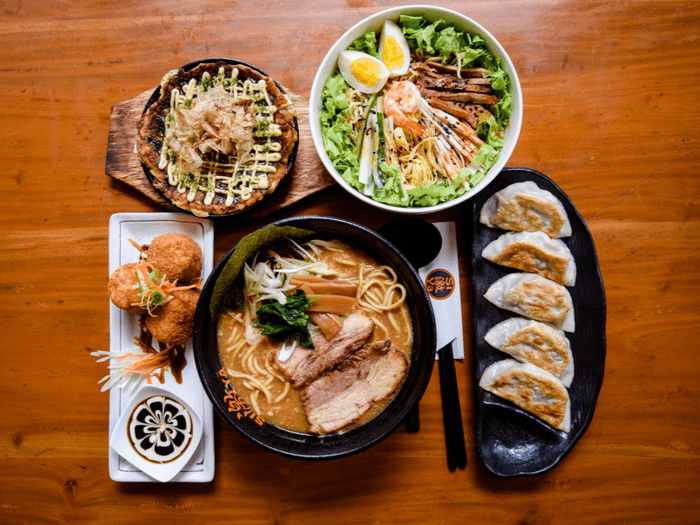
[ad_1]
This is the third in a series of episodes in which we’re talking to nutrition professionals from around the world about their culture’s traditional cuisine. If you missed the first two, please check out our previous episodes on traditional Indian food and Colombian cuisine.
Several of you have written in to suggest other countries and cuisines you’d like to explore. Takako writes:
“I am from Japan and I am curious about Japanese cuisine. Many people consider it to be healthy, but I wondering whether it might be too high in sodium.”
Joining me today to talk about the nutritional features of traditional Japanese cuisine is Miho Hatanaka, RDN.
 Miho was born in Japan and emigreated to the United States at the age of 11. She went on to study dietetics at Syracuse University and has served in various positions within the Academy of Nutrition and Dietetics. She’s also passionate about combining nutrition with mindfulness practices. (You can follow her on Instagram @mindfulmiho)
Miho was born in Japan and emigreated to the United States at the age of 11. She went on to study dietetics at Syracuse University and has served in various positions within the Academy of Nutrition and Dietetics. She’s also passionate about combining nutrition with mindfulness practices. (You can follow her on Instagram @mindfulmiho)
Below are a few highlights from our conversation. Please click the audio player to hear the entire interview.
What led you to study nutrition?
I became a dietitian because I missed the school lunches in Japan so much. Unlike school lunches in the U.S., Japanese schools (mainly elementary) generally have their own production kitchen and a staff dietitian who develops a menu for the students every day. Students have freshly cooked meals that are well balanced and nutritious. From a young age, people in Japan are taught the importance of a balanced diet and nutrition.
What role does food play in Japanese culture?
Japanese people pay the utmost respect for food and eating. Japanese people are taught to respect the food by saying “Itadakimasu” at the beginning of a meal, which shows respect to the food, people who harvested it, and who prepared it for you. And end the meal by saying “Gochisousamadeshita” to thank the food and those involved to prepare the meal you just had.
We often gift food items for weddings, anniversaries, and casual occasions, and gifting high-quality food determines your reputation. Interestingly even though we have such a high interest in food, the rate of obesity has been significantly lower than any other developed country — although it has been increasing in recent years due to the Westernization of our food.
What are the characteristic flavors and ingredients of Japanese cuisine?
Umami is a Japanese word that translates into “deliciousness.” Japanese cuisine uses many ingredients that contain the umami flavor such as shiitake mushrooms, dried fish, salmon, seaweed, and many more.
In traditional Japanese cuisine, we don’t use too many spices. Rather we believe that the flavor should come from the ingredients we’re using such as vegetables, meat, and seafood. So the seasonings are kept simple, most common seasonings are soy sauce, miso, and sake (rice wine).
What are some of the healthiest aspects of traditional Japanese diets?
We eat a lot of fish and seafood. We use an abundance of vegetables in our cuisine and people still eat by the season. Sea vegetables are the main source of micronutrients in the Japanese diet.
What are some of the less healthy aspects of traditional Japanese diets?
Some foods may contain higher sodium due to traditional seasonings such as soy sauce and miso. However, you can moderate use of these salty seasonings by using high-quality dashi — which is a broth often made from dried fish, seaweed, and vegetables.
But the Japanese diet has been influenced by the West, therefore we are seeing more use of meat, animal products, sugar, and fats.
How does Japanese food in Japan differ from the way it is served in Japanese restaurants in the West?
You won’t be eating sushi and chicken teriyaki all the time. But you will notice that the food is served in much smaller quantities. Don’t expect to eat until you’re stuffed by ordering one dish. eishoku — or a set menu — is a popular lunch item. It consists of a main dish, side, rice, and soup, each served in separate small dishes.
Visit Miho’s website at ZenIntegrativeNutrition.com
[ad_2]
